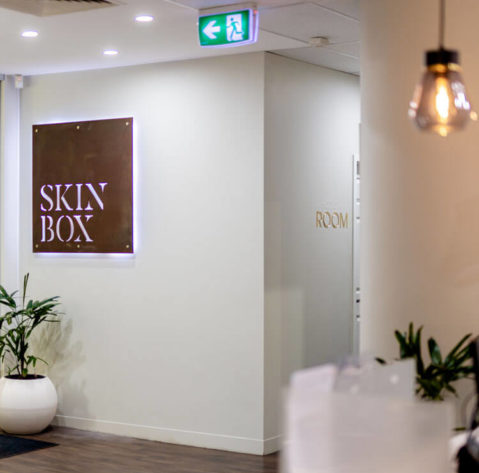Pigmentation on the face is incredibly common.
No matter the natural base colour of our skin, an even and consistent skin tone is universally associated with youthfulness and health.
Unfortunately, excessive patchy pigmentation of the facial skin is incredibly common, particularly in women with darker skin types who are naturally capable of making greater levels of melanin, the substance in skin that gives it a brown colour. Here we discuss a common type of pigmentation issue, what causes it and the most effective ways of controlling it.
“Melasma” is the medical term given to a common, benign skin condition characterised by symmetrical overly-pigmented patches with irregular borders, most often on the face.
The forehead, cheeks, upper lip and chin are the areas most likely to be affected.
The condition is caused by an overstimulation of melanocytes, which are the cells within the skin that produce melanin. These cells can be kicked into overdrive by sunlight and by hormones, specifically the female hormone oestrogen. Melasma is therefore most commonly seen in women who live in geographical areas that have a high degree of UV light, who are pregnant or on the oral contraceptive pill.
Although not medically harmful, the discolouration of the skin that occurs in melasma can be psychologically distressing. Many patients with melasma report feeling they look “dirty” or “old” because of the pigmentation patches. Whilst some are happy to cover the patches with makeup, others would like to remove the excess pigmentation and return their skin colour to a more even tone.
N.B. Not all brown patches on the skin are simple pigmentation, and some forms of skin cancer can present in a similar way. It is important to get your skin assessed by a doctor with experience in skin cancer diagnoses prior to starting any treatments or therapies targeted at pigmented patches.
There is usually no simple solution to melasma, but getting to grips with the complex mechanisms underlying the condition is fundamental to successfully controlling it.

The diagram above represents human skin. Melanin pigment is manufactured by the melanocytes, which are situated along the basal layer, in the mid portion of the skin where the dermis meets the epidermis. The melanin is then transported down the spider-like arms of the melanocytes and moved over into a different skin cell, the keratinocyte. Keratinocytes migrate upwards through the layers of the epidermis as they mature, until they are shed from the stratum corneum, a process that generally takes around 6 weeks in facial skin.
Tap into our medical expertise
We understand that the world of aesthetics and cosmetic treatments can be intimidating, that’s why our cosmetic doctors and qualified dermal therapists are here.
To share our medical knowledge. To help you look and feel your best.
It is helpful to think of the process underlying excessive pigmentation as having 3 stages:
- Production of melanin
- Transportation of melanin
- Retention of keratinocytes
Rather than addressing only one aspect of this pigmentation process, the most successful treatments for melasma are those that tackle all these stages:
Stage 1: Production of melanin
- Pregnancy
- Hormonal contraception
- Sunlight
The most common ways in which melanocytes are overstimulated are through exposure to sunlight and to oestrogen. If melasma has been brought on by the higher oestrogen levels associated with pregnancy, the melanocytes will tend to continue their overproduction until delivery, after which the hormones settle back to their usual levels and the melanocytes will calm down, however the pigment may remain trapped in the keratinocytes of the upper skin layers.
Oral contraceptive pills that contain derivatives of oestrogen can also be a cause of melasma. Changing to a lower dose pill or to an alternative form of contraception can be helpful in some cases, and this should be discussed with your medical practitioner if it applies to you.
Ultraviolet (UV) light is a powerful stimulator of melanocytes and therefore exposure to UV should be avoided whenever possible. Daily sun protection in the form of sunscreen should be the first step in controlling the pigment production. The visible spectrum of sunlight is also involved in the stimulation and so sunscreen should be broad spectrum, preferably a physical barrier such as zinc or titanium, which will block out the visible as well as the UV light. The most recent generations of zinc-based sunscreens are easy to use, non-comedogenic and can deliver an SPF of >50. There is little point moving on to steps 2 and 3 if you are not cutting off the pigment stimulation at its source, and so when treating melasma in our clinic we insist upon a daily SPF of at least 30+ or higher.
Stage 2: Transport of melanin
As discussed above, the melanin that is made in the melanocyte factories is then moved away and into keratinocytes, which are a different type of skin cell. Keratinocytes migrate upwards and spread through the epidermis as they mature, until they arrive at the uppermost layer, the stratum corneum, where they sit until they are shed as part of the natural skin cycle. Preventing the melanin from entering the keratinocytes reduces the distribution of the pigment into the higher levels of the skin, making it less visible.
There are a number of compounds available in cosmetics, cosmeceutical or prescription creams that disrupt this transportation process, including:
- Hydroquinone
- Retinoids (Vitamin A)
- Ascorbic Acid (Vitamin C)
- Niacinamide (Vitamin B3)
- Kojic Acid
- Tranexamic Acid
In addition, a variety of botanical products have been found to have alter to some extent both the production and transport of melanin, although many these have not been extensively studied, and therefore we do not know how effective they actually are. The more common of these agents seen in cosmeceutical products are:
| Aloesin (isolated from Aloe vera) | Marine algae |
| Arbutin (bearberry) | Orchid extract |
| Boswellia (herb) | Pycnogenol (pine bark, witch hazel bark) |
| Coffeeberry extract | Resveratrol (red grapes) |
| Grape seed extract | Silymarin (milk thistle) |
| Green tea extract | Soy extract |
| Liquorice |
Stage 3: Retention of keratinocytes
Once the melanin pigment has been transported into the keratinocyte cells, it will remain there until either natural shedding occurs (which may take many months), or the dead cells of the stratum corneum are targeted for removal by methods such as:
- Topical vitamin A
- Gentle dermabrasion
- Chemical Peels – superficial/medium depth
- Microneedling
- Spot cryotherapy (light freezing of the skin surface)
- Intense Pulsed Light (IPL)
- Laser (Q-switched or picosecond)
- Fractional Radiofrequency
Skin types that are prone to melasma are also prone to post-inflammatory hyperpigmentation, whereby inflammation in the skin kick starts the overproduction of melanin. All of the above treatments have a significant limitation in the management of melasma, in that they have the ability to cause inflammation of the basal skin layer, leading to the potential for rebound pigmentation or worsening of existing pigmentation. These treatments should be performed conversatively by practitioners that are well-trained and experienced in dealing with hyperpigmentation.
Although it may seem to have an initial benefit, any treatment that removes the pigment-loaded keratinocytes will be ineffective in the long-term unless the other steps in the pigmentation process are also addressed. Once the pigmented keratinocytes have been removed, unless the underlying stimulation of the melanocytes has also been eliminated, more pigment will inevitably form. Maintenance therapies are therefore as important as initial treatment, and non more so than daily application of a broad-spectrum, high SPF sunscreen 🙂





